At War With The Government? - Armed, angry and White
By Richard B. Muhammad and Brian E. Muhammad -Final Call Staffers- | Last updated: May 3, 2016 - 11:35:49 AMWhat's your opinion on this article?
Is disaster brewing along with threats targeting law enforcement?
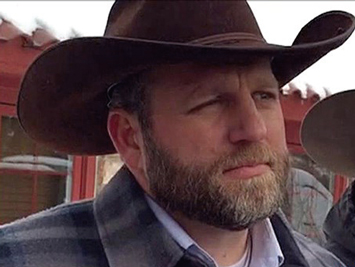
Ammon Bundy, son of Cliven Bundy.
|
The group had led a 41-day armed takeover and occupation of a federal facility at the Malheur National Wildlife refuge in Oregon. Mr. Finicum was a leading figure in the militia group.
Oregon authorities said without a doubt state police shot Mr. Finicum to protect themselves and their fellow officers from imminent harm. Militia sympathizers disagree, arguing Mr. Finicum was murdered in cold blood and some want retaliation.
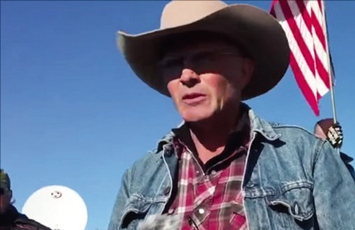
Robert “LaVoy” Finicum, 54, had been the spokesperson during the Malheur National Wildlife Refuge occupation. He was killed Jan. 26. Photo: MGN Online
|
A federal magistrate judge in Las Vegas set a Feb. 6, 2017 trial date for rancher Cliven Bundy and 18 other defendants in an armed confrontation with government officers two years ago.
In a written order filed April 27, U.S. Magistrate Judge Peggy Leen declared the case “complex” for tracking purposes, and agreed that it will take time to prepare for a trial involving 19 defendants, more than 30 government witnesses and an exceptionally large amount of evidence.
She canceled a May 2 trial date as unrealistic.
Judge Leen’s order came after a scheduled hearing in Las Vegas that put all 19 defendants and their lawyers in one courtroom for the first time. It could mean many months in jail ahead of trial for each man, although several are challenging and appealing detention orders.
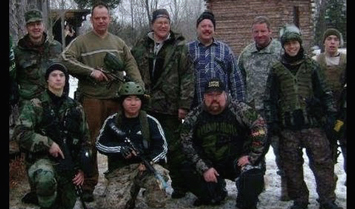
|
The conspiracy, obstruction, weapon, threats and assault charges could get each the equivalent of life in prison for the tense gunpoint standoff in April 2014 near Cliven Bundy’s ranch outside Bunkerville, about 80 miles northeast of Las Vegas.
Judge Leen noted that seven defendants, including Bundy’s sons Ammon Bundy and Ryan Bundy, face trial Sept. 7 in federal court in Portland, Oregon. The seven are among 26 people accused of taking part in the armed occupation of a U.S. wildlife refuge this year.
The Bundy brothers were returned in custody to Oregon, where Ammon Bundy’s attorneys filed documents contesting the authority of the federal government to prosecute him for the takeover of the Malheur National Wildlife Refuge.
In an argument echoed by states’ rights advocates, he maintains that the federal government largely lost the right to own land inside Oregon once statehood was achieved.
His father argues in Nevada that the federal government doesn’t have jurisdiction over the public land surrounding the Bundy homestead, where family cattle have grazed for decades.
The federal Bureau of Land Management moved to round up cows on the ranch, obtaining court orders with arguments that the elder Bundy racked up more than $1 million in unpaid grazing fees and fines.
Meanwhile in Portland, lawyers for Ammon Bundy said the leader of the Oregon wildlife refuge occupation offered after his arrest to plead guilty if charges against other defendants were dismissed, but the deal was rejected a day before the last occupiers gave up. The assertion is made in a pre-trial motion filed April 27 in federal court.
Ammon Bundy was arrested by FBI agents and Oregon state troopers on Jan. 26. More than two dozen people have been arrested for the occupation of the Malheur National Wildlife Refuge that began Jan. 2 and ended with surrender of the last four on Feb. 11.
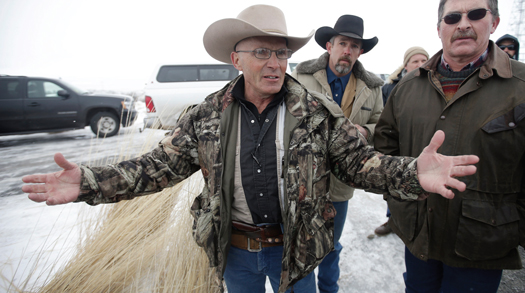
In this Jan. 9, file photo, Robert “LaVoy” Finicum, left, a rancher from Arizona, talks to reporters at the Malheur National Wildlife Refuge near Burns, Ore. On Mar. 8, authorities said police were justified in killing Finicum during a traffic stop on Jan. 26. Photo: AP Wide World
|
Angry, White and armed
Watchers of anti-government groups say threats on authorities from angry Whites are connected to a long list of perceived grievances with the federal government.
“I would describe it as a potentially volatile situation where different groups, either like a militia-style group or a sovereign citizen type group believes that the federal government is illegitimate,” said Bill Johnson, executive director of the National Association of Police Organizations.
NAPO is a coalition of police unions and associations from across the U.S. that supports the interests of police officers through legislative advocacy, political action and education.
Notwithstanding who is right or wrong on the politics and the issues involved, Mr. Johnson said either way it’s a “dangerous situation” for protestors and the federal agents. The blend of “strong feelings on both sides” combined with armed people is a bad arrangement, he added.
A life for a life
Many of the threats aimed at Oregon authorities demanded a life for a life. “You killed an unarmed rancher, so now one of you must die,” an unknown person said in a message left for Oregon Governor Brown, who was critical of federal government handling of the Malheur standoff . She argued that the feds should have enforced the law and there was not a strong enough stance by Washington officials.
“We’re going to shoot to kill,” declared another anonymous caller in Oregon.
The Deschutes County Sherriff Dept.—where officers involved in the shooting worked—made redacted transcripts of the threats available. Much of the language expressed contempt for law enforcement, the U.S. government and called for war and regime change inside America.
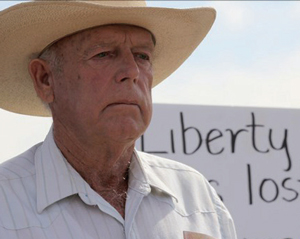
Cliven Bundy the last remaining rancher in the southern Nevada county.
|
One writer invoked the famous words of Patrick Henry, a U.S. Founding Father: “Give me liberty or give me death,” however the writer added, “If it’s going to be death, you’re going to need a lot of bullets.”
In an April 5 exchange on the Oregon governor’s Facebook page, supporters of Mr. Finicum and the militia blasted Gov. Brown for ordering “the murder of a god loving … patriotic, family-oriented man.” The writer said the governor “then ordered the jailing of others who stood for the constitution and truth” and called her a “traitor to the oath she took and to we the people.”
Several “officer safety” memos were issued throughout Oregon warning law enforcement personnel to be aware of their surroundings because of the intense threats. Calls to Gov. Brown’s office and the Deschutes County Sherriff office were not returned by press time.
Nationally police have concerns about such threats because some have proven to be credible, Mr. Johnson told The Final Call in a telephone interview. “There has been violence against officers and officers have been killed even,” he said.
An infamous example was the June 8, 2014 execution style killing of two police officers in Las Vegas by husband and wife shooters Jerad and Amanda Miller. The Millers reportedly yelled “this is a revolution” as they shot the two officers and covered them under a “Don’t Tread On Me” flag from America’s Revolutionary War—then killed themselves in an aftermath melee with cops.
Although serious antagonism with the government and police from angry White groups has been prevalent, Mr. Johnson pointed out there is little media exposure about it. “The threats are out there and they don’t make the news as much,” he said.
Experts concur and say the threat of White right wing, anti-government violence has been underestimated.
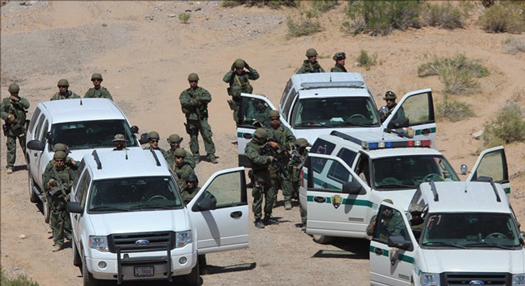
Law enforcement at Bundy Ranch in April, 2014. Photo: MGN Online
|
Police responses and public perception
Authors of a January, 2016 report from the Triangle Center on Terrorism and Homeland Security, “The Challenge and Promise of Using Community Policing Strategies to Prevent Violent Extremism,” recommended closing the gap on how domestic terrorism is perceived and handled.
The standard view and focus on violent extremism inspired by the “al Qaeda, ISIS and like-minded groups” must be expanded to include other groups outside that category, the report said. The report said there is a need to “develop methods for engaging with community members who may be targeted for recruitment by anti-government, racist, or sovereign citizen violent extremist groups.”
“Police departments we interviewed are well aware of the threat from anti-government, racist, environmental, or other forms of violent extremism,” said authors Charles Kurzman and David Schanzer, in the report.
Out of 382 law enforcement agencies they surveyed, 74 percent rated anti-government extremism, like “sovereign citizen” movements—that do not recognize the authority of laws or governments—as one of the top three terrorist threats in their jurisdiction. While only 39 percent listed extremism connected to Muslims as a top threat, and 33 percent listed environmental extremism third.
“Despite this threat profile, many of the law enforcement agencies we interviewed had well established outreach and engagement programs with Muslim Americans, but had starkly different practices for addressing the threat from antigovernment, racist, environmental and other types of extremists,” wrote the report authors.
Some police departments said engagement with the communities targeted for recruitment by these groups simply is not possible. According to the report, when one police department was asked what kind of outreach it conducted to antigovernment groups. The answer? “We don’t.” This department noted that “we can talk to them about particular incidents, but … we don’t have meetings with anti-government groups and militia groups.”
Commenting on anti-law enforcement groups, another police department said, “we are not actively bumping heads with them and they are not actively bumping heads with us.”
Extremists in different forms and motivations
The Federal Bureau of Investigation acknowledges “domestic terrorism—Americans attacking Americans because of U.S.-based extremist ideologies— comes in many forms,” motivations and is a growing problem. In Oregon, protestors had land disputes with the federal government while other groups are race-based and desire White power and a separate land base for Whites.
White extremists target racial, ethnic, and religious minorities, the federal government and, in some instances one another. Their tactics include assault, murder, threats and intimidation, and bombings.
“They also commit other kinds of crimes—like drug trafficking, bank and armored car robberies, and counterfeiting—to fund their hate filled activities,” said the FBI. (The Associated Press contributed to this report.)
INSIDE STORIES AND REVIEWS
-
-
About Harriett ... and the Negro Hollywood Road Show
By Rabiah Muhammad, Guest Columnist » Full Story -
Skepticism greets Jay-Z, NFL talk of inspiring change
By Bryan 18X Crawford and Richard B. Muhammad The Final Call Newspaper @TheFinalCall » Full Story -
The painful problem of Black girls and suicide
By Charlene Muhammad -National Correspondent- » Full Story -
Exploitation of Innocence - Report: Perceptions, policies hurting Black girls
By Charlene Muhammad -National Correspondent- » Full Story -
Big Ballin: Big ideas fuel a father’s Big Baller Brand and brash business sense
By Bryan Crawford -Contributing Writer- » Full Story






 Click Here Stay Connected!
Click Here Stay Connected!








